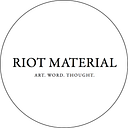Forgotten Roots: How Los Angeles Shaped Robert Rauschenberg
At LACMA (Through February 10, 2019)
Reviewed by Emily Nimptsch
Revealing the divine in the forsaken and the sublime in the mundane, beloved late Neo-Dadaist Robert Rauschenberg (1925–2008) pens his love letter to Los Angeles in LACMA’s current retrospective Rauschenberg: In And About L.A. Although typically associated with the New York art scene of the 1950s and 60s, this iconic collagist actually derived a great deal of creative inspiration from this sprawling metropolis and its sun-drenched shores.
This life-long infatuation with the city and its surrounding areas began in 1944 when the young Rauschenberg was stationed at Camp Pendleton. While on leave one fateful day, he made his first visit to a museum. This pilgrimage to the Huntington Library, Art Collection, and Botanical Gardens in San Marino proved to be a transformative one for the young man as he decided to dedicate his life to art right then and there. Throughout his lengthy and prolific career, Rauschenberg often returned to Los Angeles, finding himself continuously inspired by its sanguine light, forgotten backstreets, geographical beauty, and abundant diversity.
Upon entering this cavernous yet luminous exhibition space, the eye instantly fixates on a monumental black and white screenprint titled Currents (1970). Spanning sixty feet in length, this profound and gripping piece was the largest known print work at the time. Similar to Pablo Picasso’s melancholic masterpiece, Guernica (1937), in palette, tone, style, and form, this work also serves as a meditation on the government and violence through the lens of the news media.
Crafted in Malibu following a devastating fire at his New York City studio in 1969, this cacophonous collage features a myriad of clippings from both The Los Angeles Times and the now-defunct Los Angeles Herald Examiner. The headlines and photographs seen here delve into the issues of the day, including sports, crime, corruption, race relations, riots, scandals, and the quagmire in Vietnam. While these stories are undoubtedly products of this bygone era, they also feel eerily currentand contemporary. They are oddly cyclical, proving that social and political upheaval is nothing new in American culture. The names and faces of the people involved may have changed, but the narrative remains the same.
To read the rest of this review, go to Riot Material magazine:https://www.riotmaterial.com/forgotten-roots-rauschenberg/
And please follow us on Facebook: https://www.facebook.com/riotmaterial/
